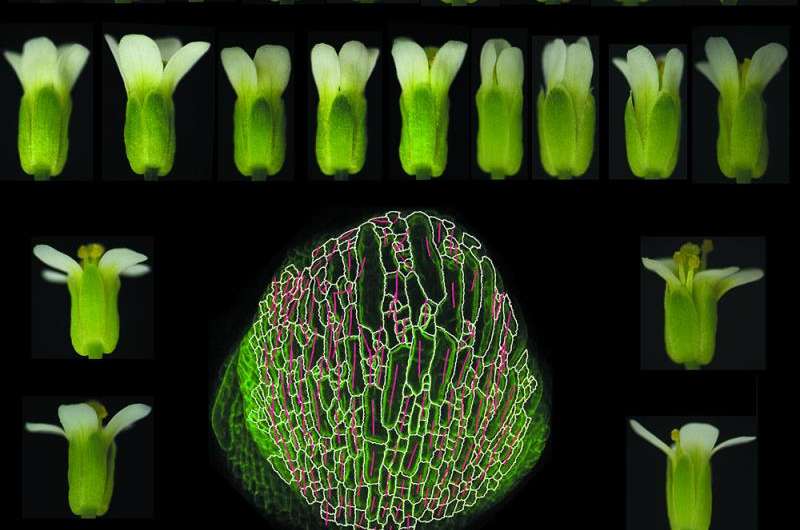Flower bud uniformity beholden to time and space

What makes flowers on a plant almost identical, or internal organs remarkably reproducible?
A study of sepals in Arabidopsis plants published in the July 11 issue of the journal Developmental Cell has revealed the mystery of how such uniformity occurs. Though the research was done on sepals – the bud that holds a plant's reproductive organs – the researchers suspect similar mechanisms apply to organ development in all organisms. The study was conducted by an interdisciplinary team led by Cornell researchers.
The team found that although cells grow at different rates and in separate directions, such variability averages out over time. A fast-growing cell slows its rate of growth over time, while a neighboring slow-growing cell may speed up. In this way the growth rates of cells average out to be more equal as organs develop. Similarly, over time, cells randomly growing in different directions fall into an average uniform direction that follows the architecture of the organ.
This principle, called spatiotemporal averaging, is dependent on cells maturing and stopping growth at the right time to create flowers on a plant that are the same size and shape. The researchers identified a gene, FtsH4, that affects the accumulation of reactive oxygen species (ROS) which, in effect, stiffens cell walls. When cell walls become stiff enough, contents within the cell run out of room to grow, and the cell matures. This stop-growth mechanism also inhibits spatiotemporal averaging. Future research will explore what triggers generation of ROS at the right time.
"This is a really novel finding that we've observed for the first time, but we suspect that this is happening in essentially all organisms," said Adrienne Roeder, a Nancy M. and Samuel C. Fleming Term Assistant Professor at the Weill Institute for Cell and Molecular Biology and in the Department of Plant Biology, and a corresponding author of the study along with Arezki Boudaoud, a biophysicist at the University of Lyon, France.
"We know that cells are variable in other organisms, so they probably need some kind of averaging like this to produce the regular organs we see in all organisms," Roeder said.
Lilan Hong, a first author of the paper and a postdoctoral researcher in Roeder's lab, looked for mutant Arabidopsis plants with sepals of irregular size and shape. From those plants she identified a mutant form of the FtsH4 gene. The researchers found plants without a functional form of this gene (like those in mutants) have flowers of different sizes and shapes. They also discovered the mutant gene triggers the accumulation of ROS too early, causing cells to mature quickly so they lack time to average their growth and direction, which leads to irregularities.
Beyond explaining a basic mystery of developmental biology, understanding uniformity and how it is disrupted is important for the proper functioning of all living things, Roeder said. It's also crucial for agriculture, where distributors require standard sizes and shapes for ease in shipping fruits and other produce to market, she said.
The diverse international team used an interdisciplinary approach that combined expertise in biology, computer science, physics and applied mathematics.
More information: Lilan Hong et al. Variable Cell Growth Yields Reproducible OrganDevelopment through Spatiotemporal Averaging, Developmental Cell (2016). DOI: 10.1016/j.devcel.2016.06.016
Journal information: Developmental Cell
Provided by Cornell University



















